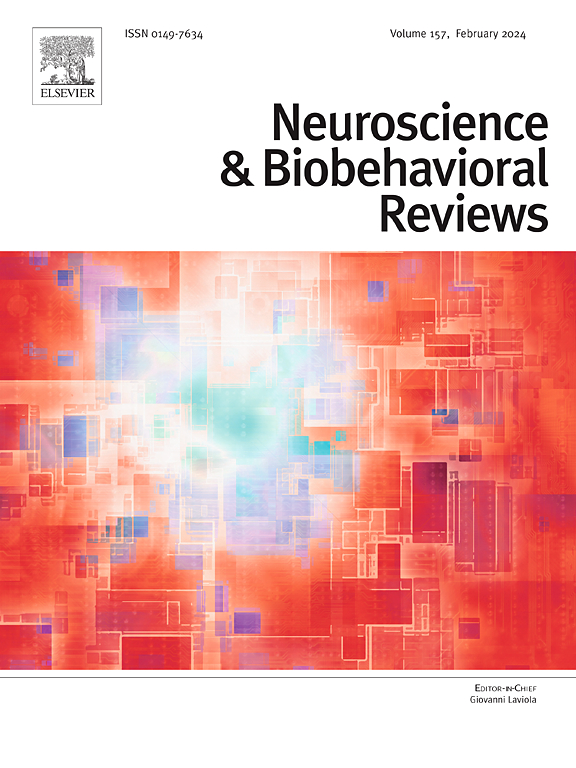Differences in fMRI-based connectivity during abstinence or interventions between heroin-dependent individuals and healthy controls
IF 7.5
1区 医学
Q1 BEHAVIORAL SCIENCES
引用次数: 0
Abstract
The substantial personal, societal, and economic impacts of opioid addiction drive research investigating how opioid addiction affects the brain, and whether therapies attenuate addiction-related metrics of brain function. Evaluating the connectivity between brain regions is a useful approach to characterise the effects of opioid addiction on the brain. This work is a systematic narrative review of studies investigating the effect of abstinence or interventions on connectivity in people who are dependent on heroin (HD) and healthy controls (HC). We found that HD typically showed weaker connectivity than HC between three functional networks: the Executive Control Network, Default Mode Network, and the Salience Network. Abstinence and Transcranial Magnetic Stimulation (TMS) both attenuated differences in connectivity between HD and HC, often by strengthening connectivity in HD. We observed that increased connectivity due to abstinence or TMS consistently related to decreased craving/risk of relapse. Using these findings, we present an “urge and action framework” relating therapeutic factors contributing to craving/relapse, connectivity results, and neurobiological models of HD. To inform future research, we critically assessed the impact of study design and analysis methods on study results. We conclude that the weaker between-network connectivity in HD and HC and its relationship to craving/relapse merits further exploration as a biomarker and target for therapeutic interventions.
海洛因依赖个体与健康对照者在戒断或干预期间fmri连接的差异
阿片类药物成瘾对个人、社会和经济的重大影响促使研究调查阿片类药物成瘾如何影响大脑,以及治疗是否会减弱与成瘾相关的脑功能指标。评估大脑区域之间的连通性是表征阿片类药物成瘾对大脑影响的有用方法。本研究是一篇系统的叙述性综述,研究了戒断或干预对海洛因依赖者(HD)和健康对照者(HC)连通性的影响。我们发现HD在三个功能网络(执行控制网络、默认模式网络和显著性网络)之间的连通性通常比HC弱。禁欲和经颅磁刺激(TMS)通常通过加强HD的连通性来减弱HD和HC之间的连通性差异。我们观察到,由于戒断或经颅磁刺激而增加的连通性始终与减少渴望/复发风险相关。利用这些发现,我们提出了一个“冲动和行动框架”,与HD的渴望/复发、连通性结果和神经生物学模型相关的治疗因素。为了给未来的研究提供信息,我们批判性地评估了研究设计和分析方法对研究结果的影响。我们的结论是,HD和HC中较弱的网络间连通性及其与渴望/复发的关系值得进一步探索,作为治疗干预的生物标志物和靶点。
本文章由计算机程序翻译,如有差异,请以英文原文为准。
求助全文
约1分钟内获得全文
求助全文
来源期刊
CiteScore
14.20
自引率
3.70%
发文量
466
审稿时长
6 months
期刊介绍:
The official journal of the International Behavioral Neuroscience Society publishes original and significant review articles that explore the intersection between neuroscience and the study of psychological processes and behavior. The journal also welcomes articles that primarily focus on psychological processes and behavior, as long as they have relevance to one or more areas of neuroscience.

 求助内容:
求助内容: 应助结果提醒方式:
应助结果提醒方式:


